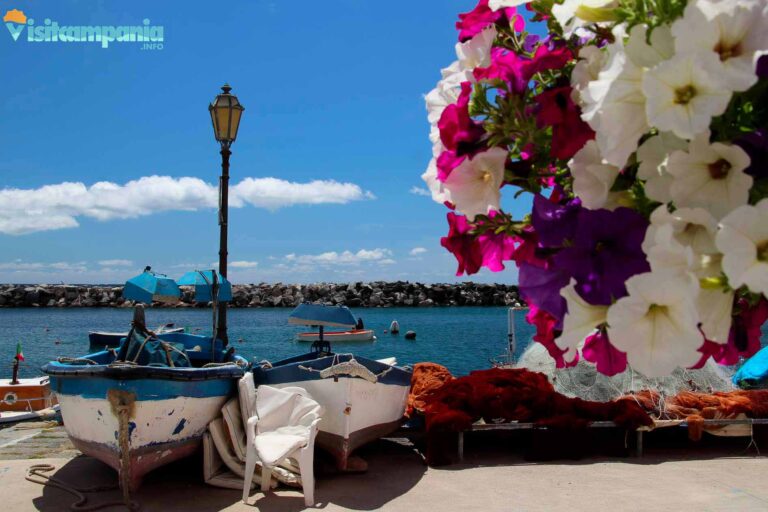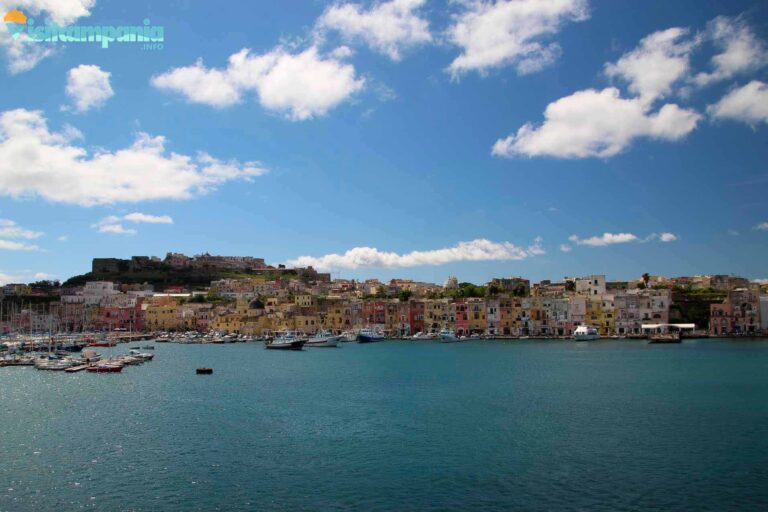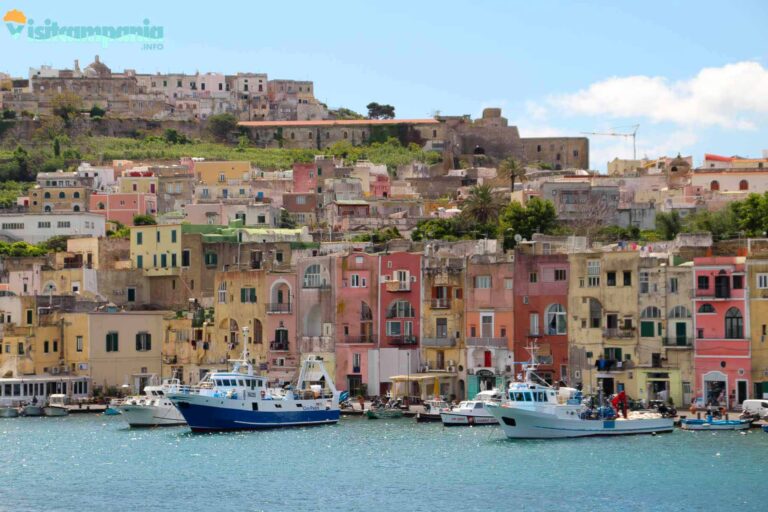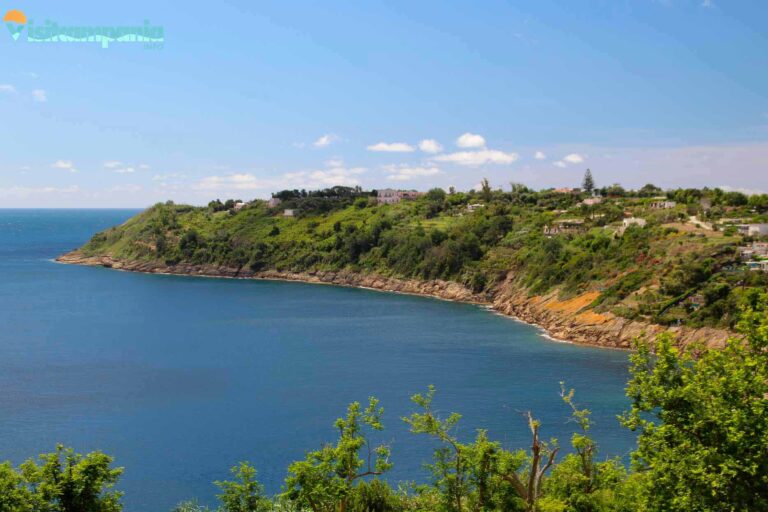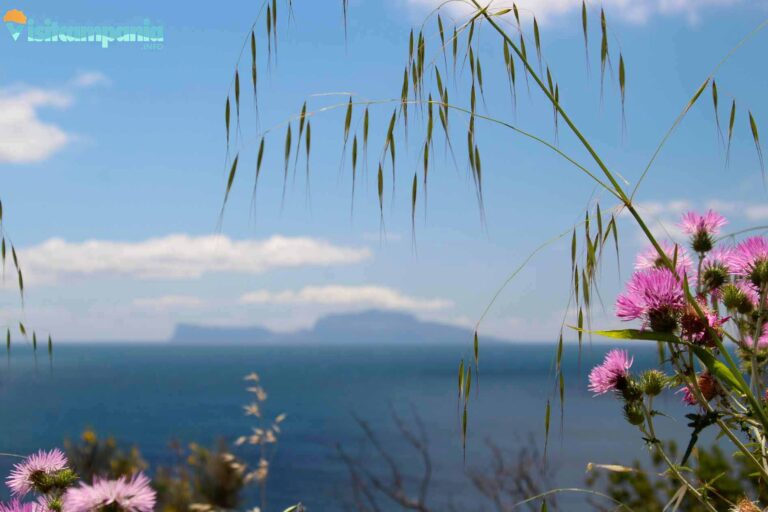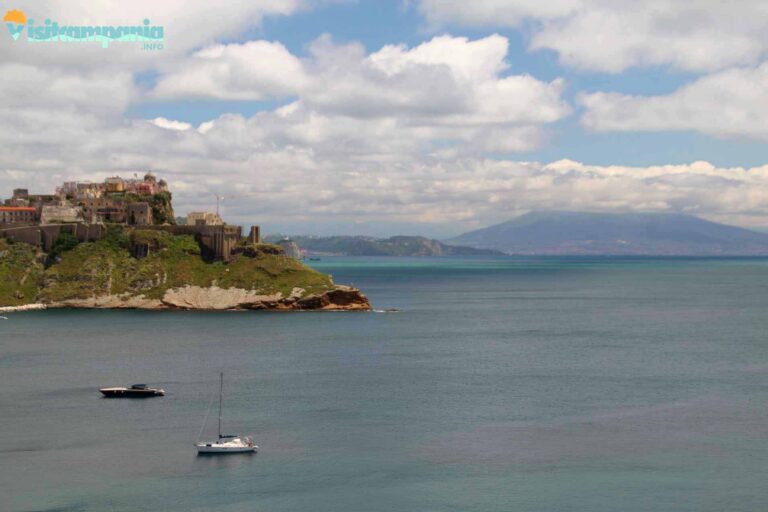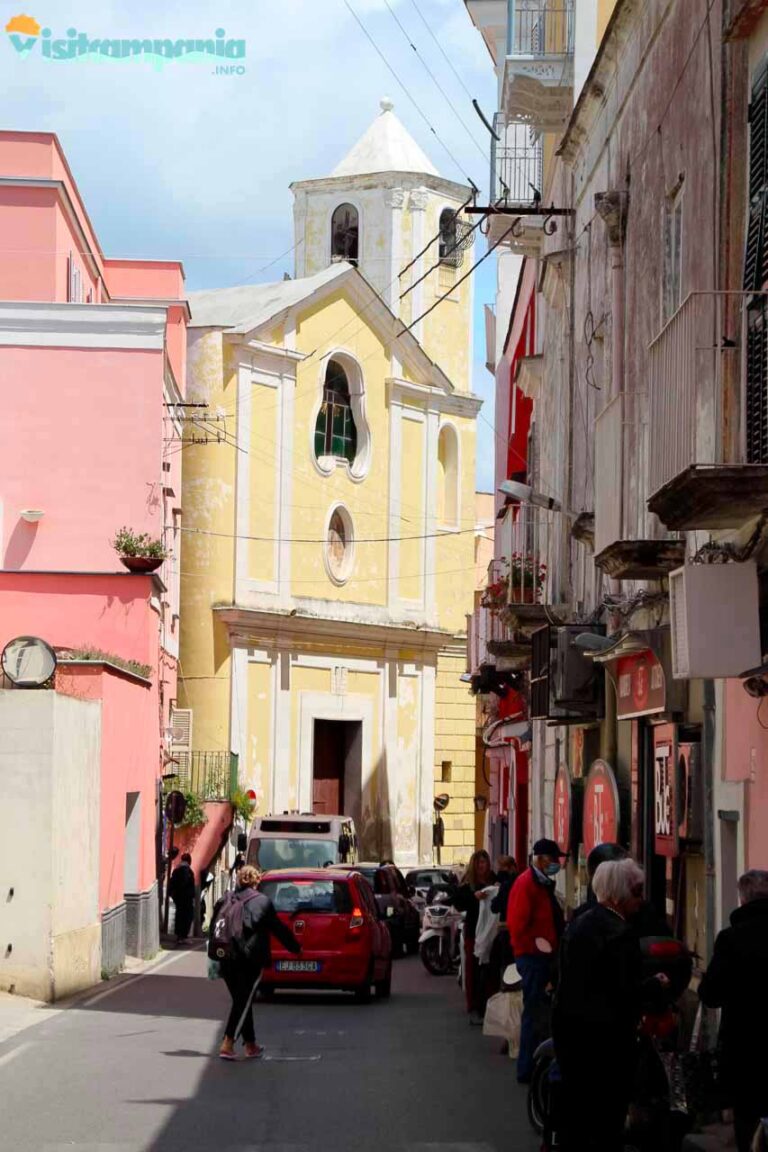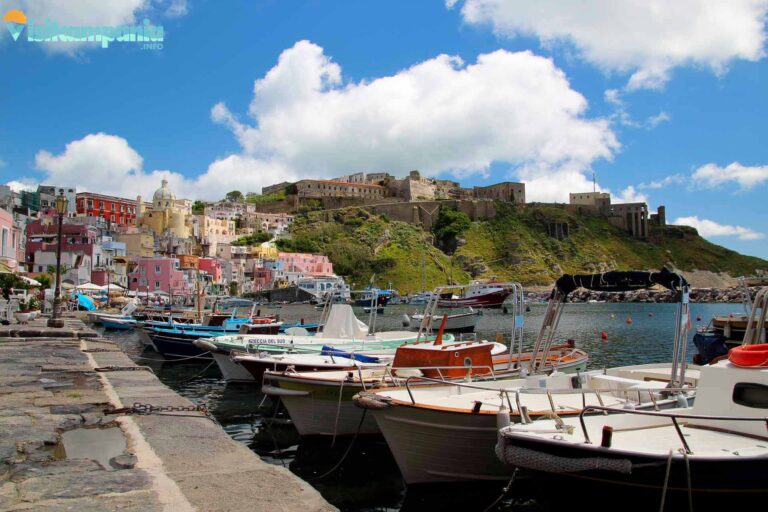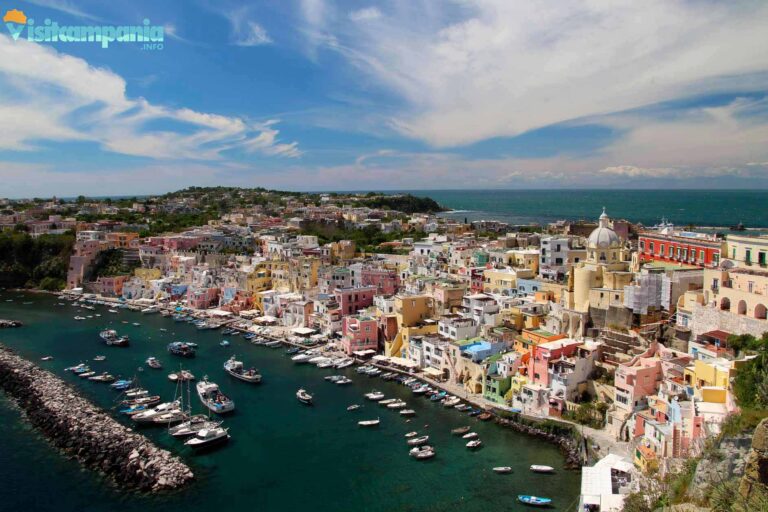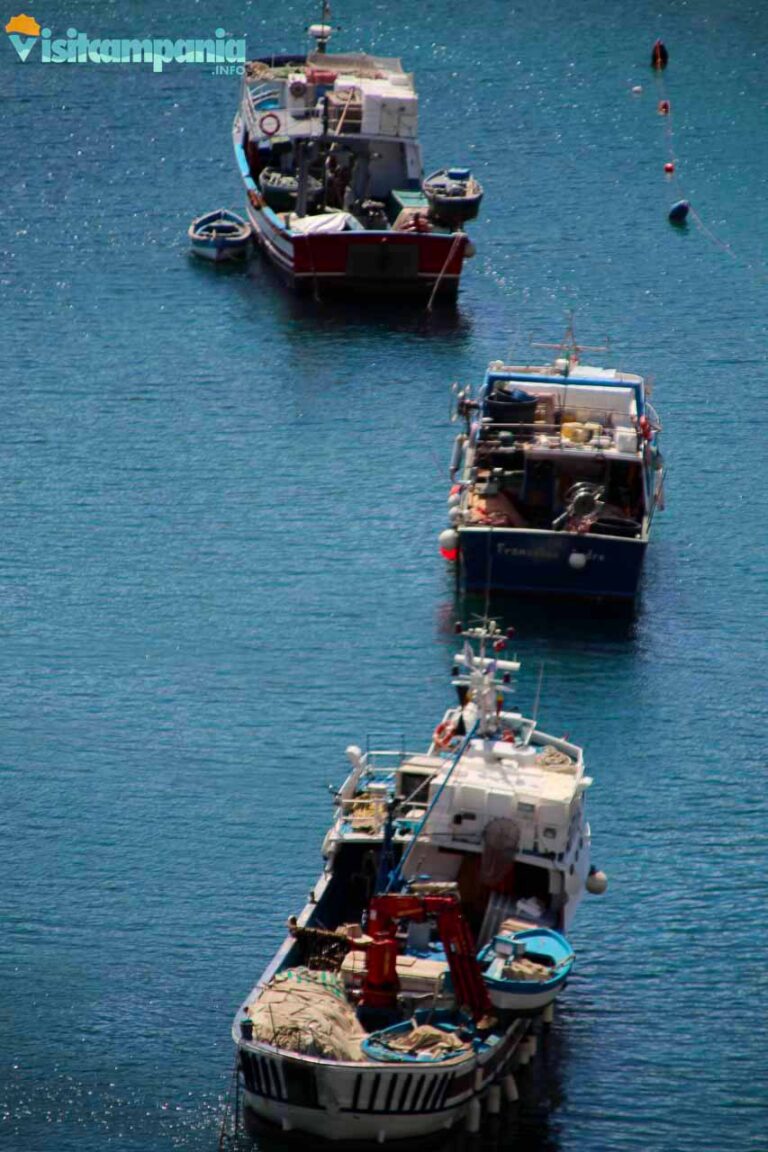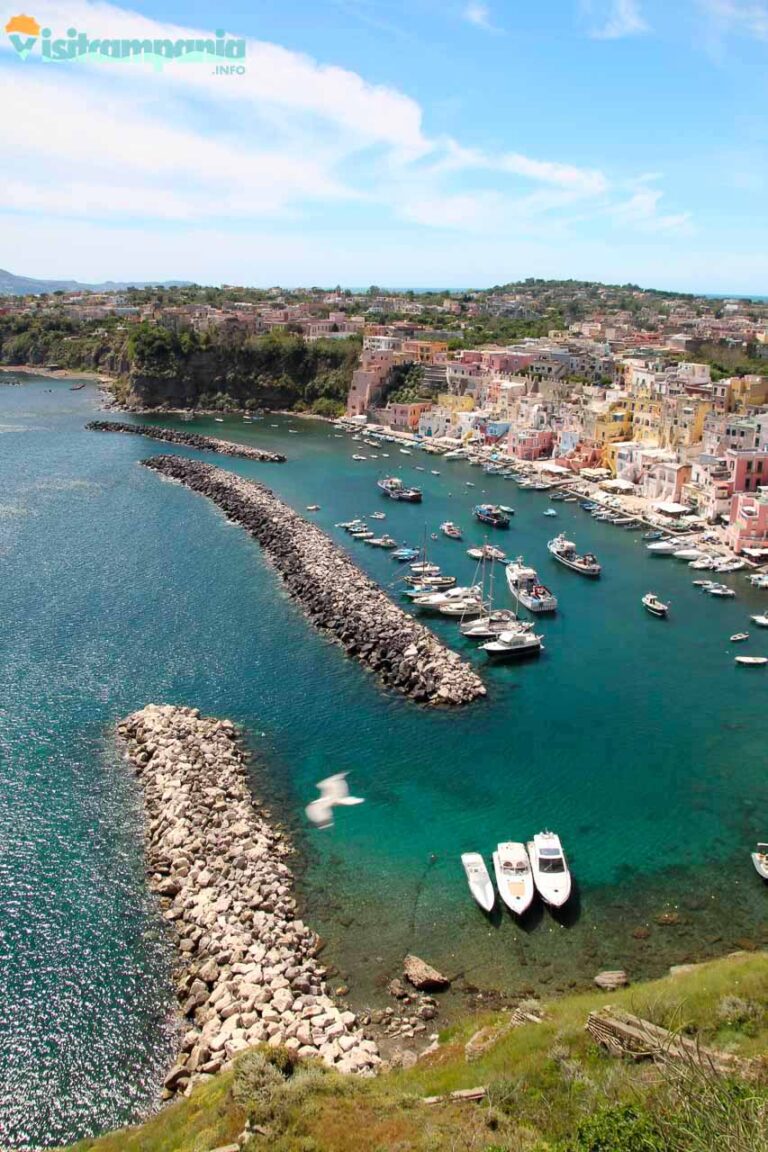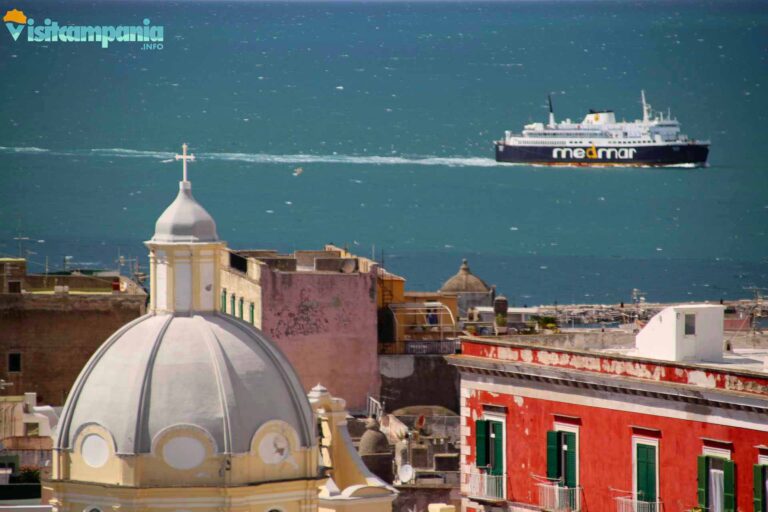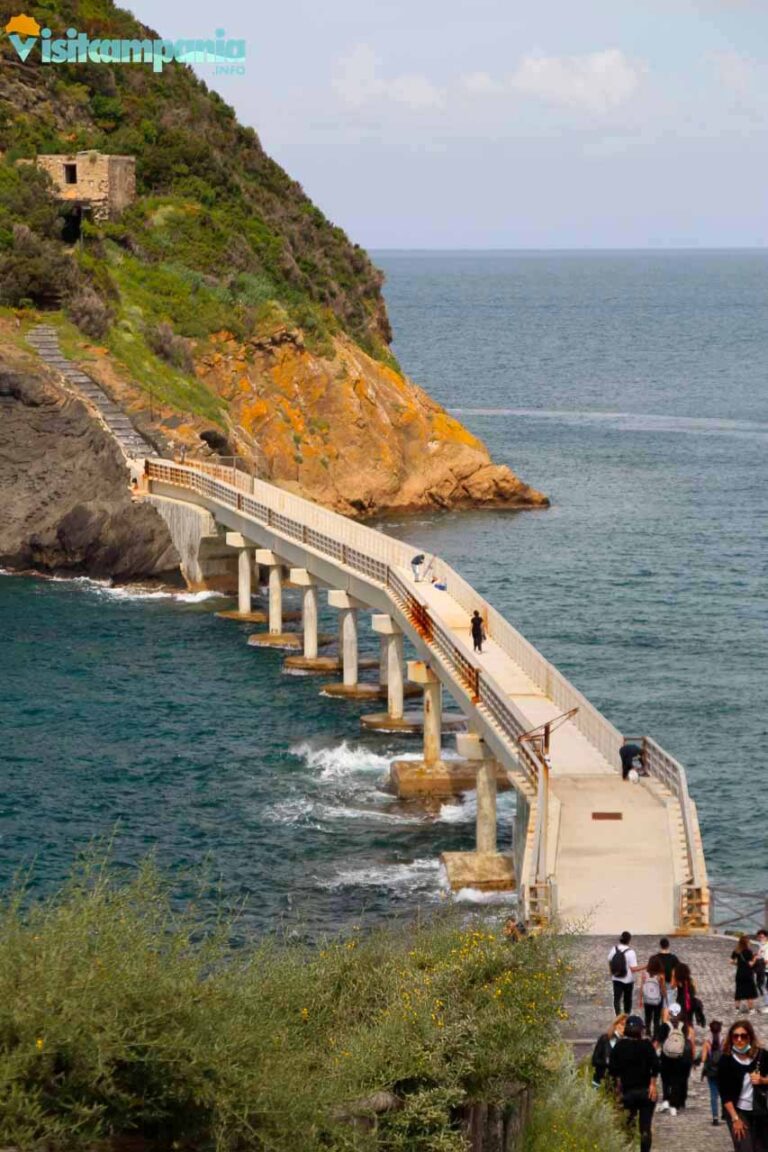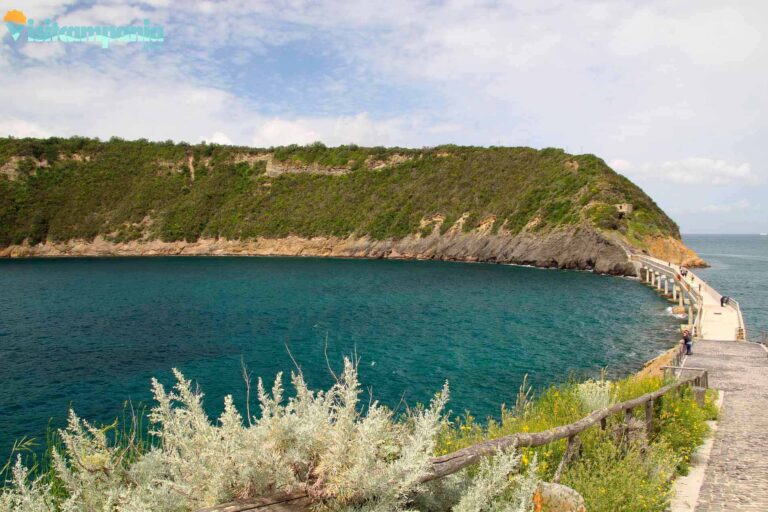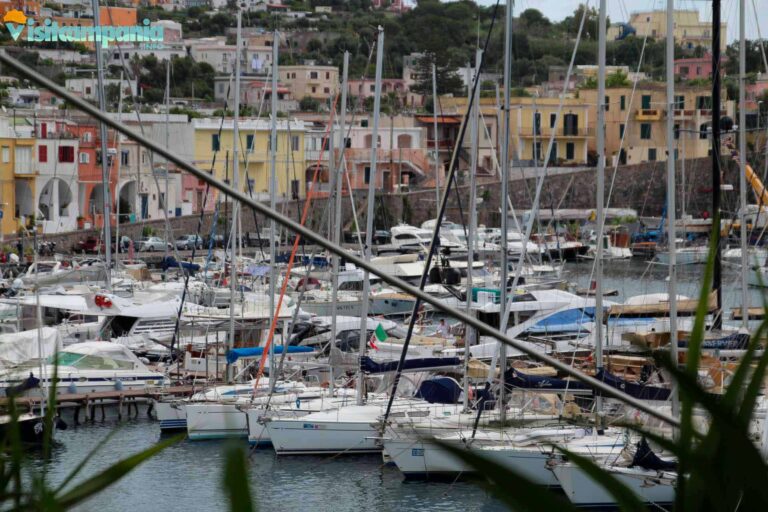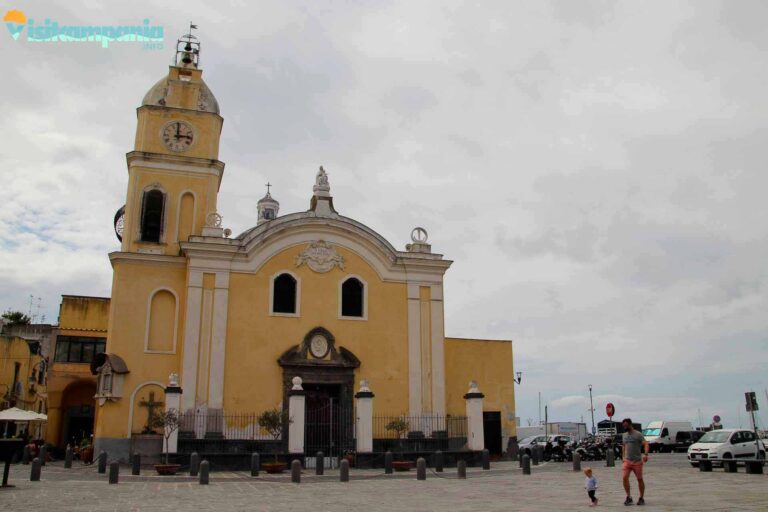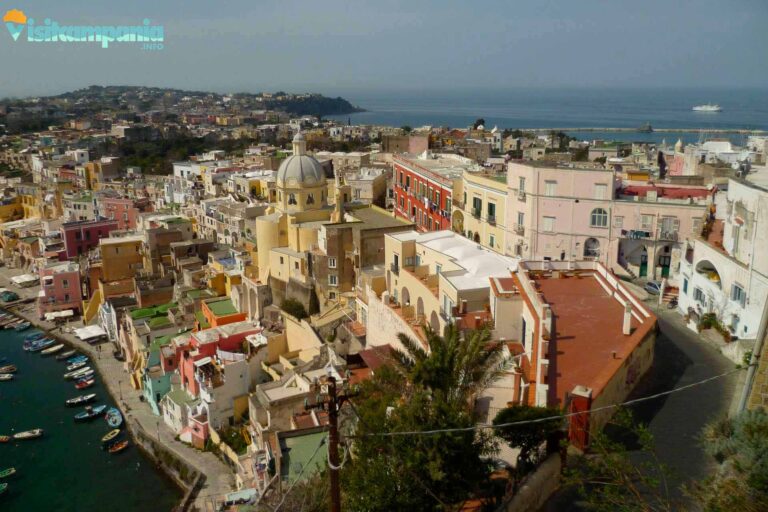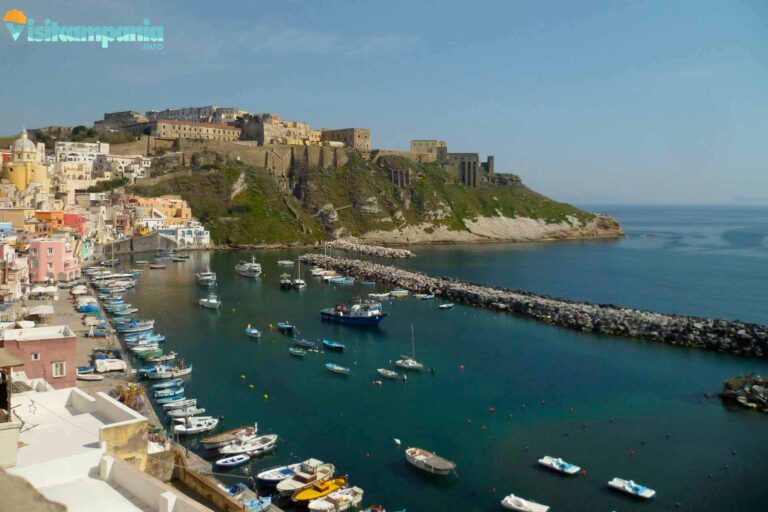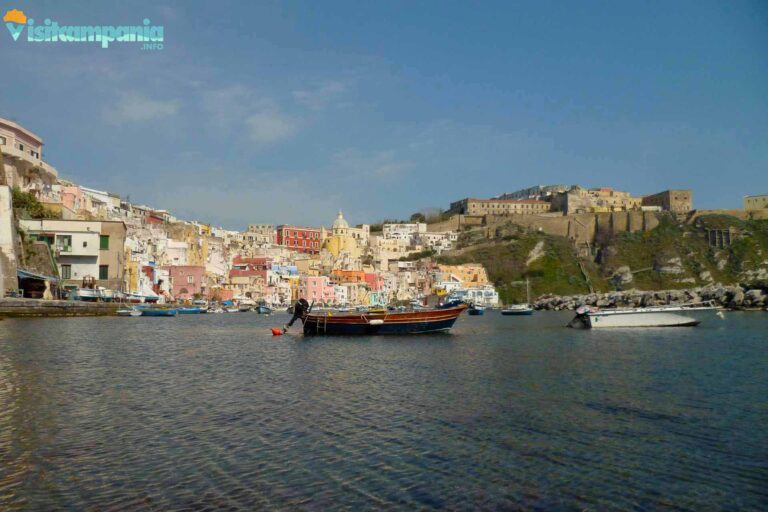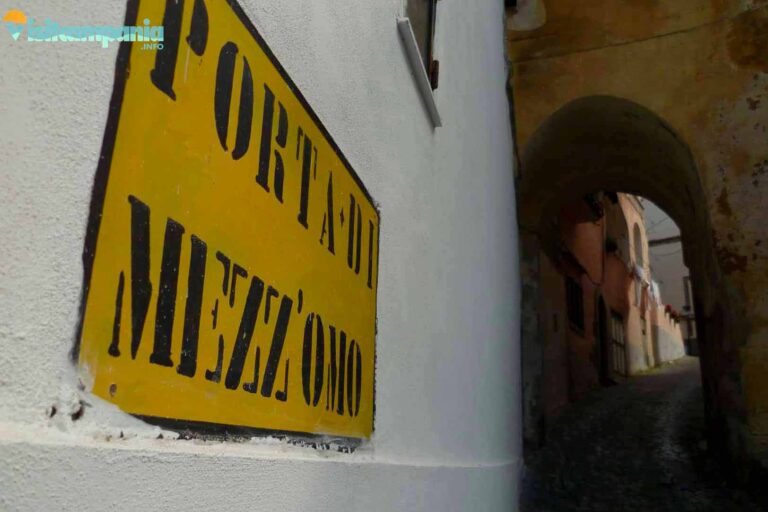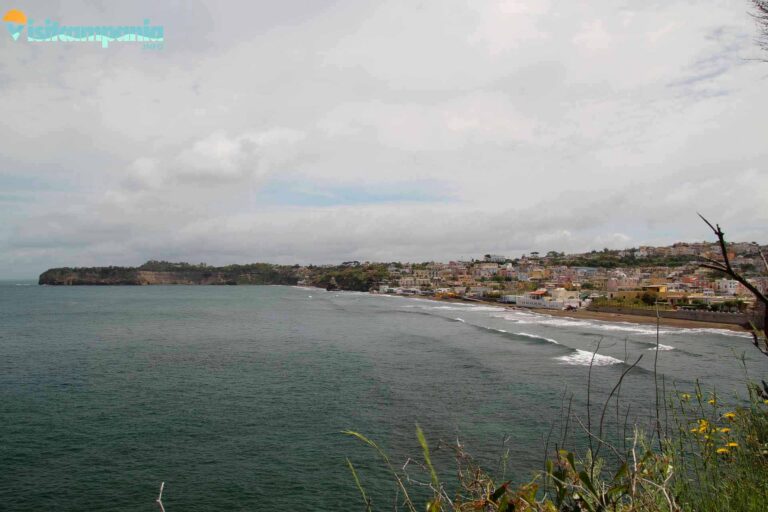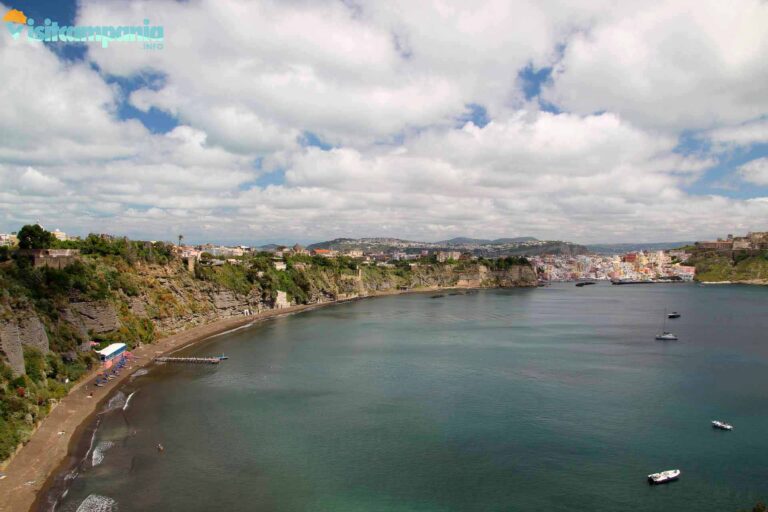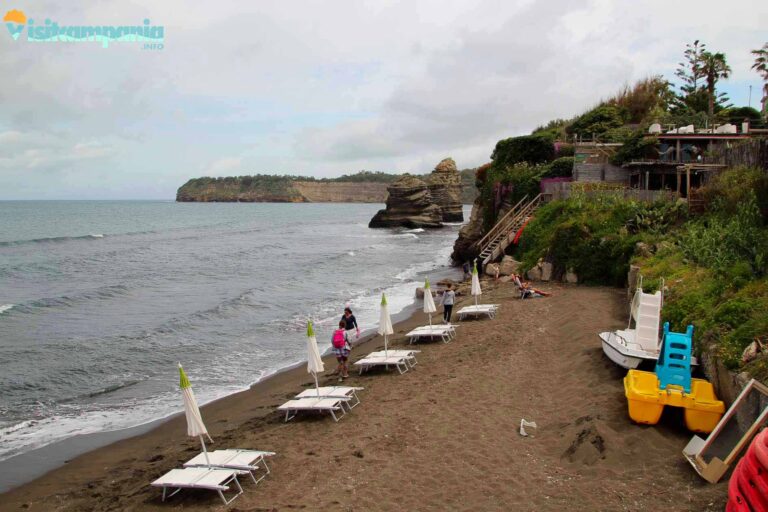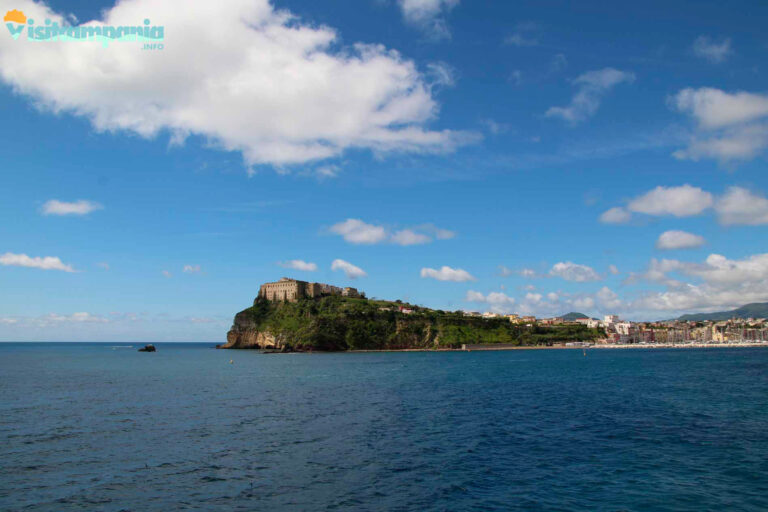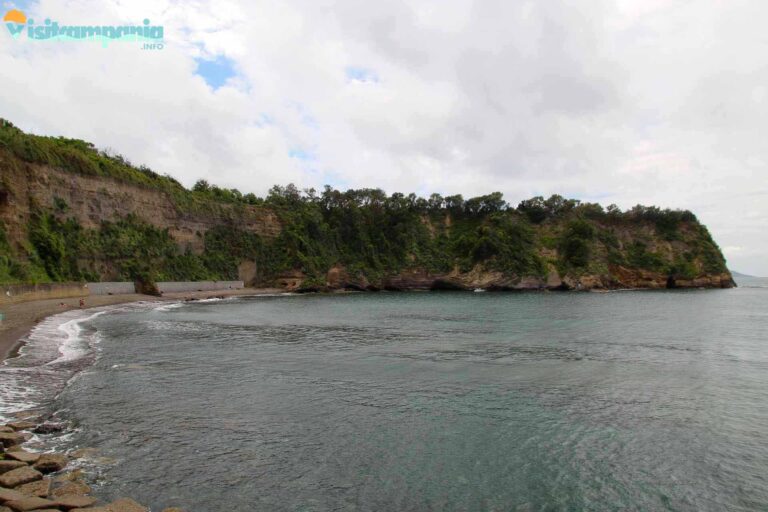What is Procida

Small but surprising, Procida is a volcanic island in the Gulf of Naples , between Ischia and the mainland. With only 4 km² and just over 10,000 inhabitants, Procida embodies a discreet, intimate beauty, deeply linked to the maritime tradition .
The island is divided into nine picturesque districts , each with a distinct soul: from the seaside village of Corricella to Terra Murata , the historic perched nucleus. To the south, the lively Chiaiolella welcomes yachtsmen, while Sent’cò and Marina Grande represent the commercial heart.
The coasts, 16 km long, alternate beaches and cliffs , with spectacular views and three strategically distributed ports . Not far away, Vivara , connected by a bridge, is a protected nature reserve and an integral part of the Marine Protected Area Regno di Nettuno , which protects the marine ecosystem between Procida, Ischia and Vivara.
Unlike the more worldly Capri and Ischia, Procida retains a simple and authentic charm . The pastel-colored houses, the smell of sea and lemons, the genuine cuisine and the hospitality of the locals offer a unique and relaxing experience.
Perfect for those who love slow tourism, the island can be explored on foot , between breathtaking views and sunsets over the port. It can be visited in a day from Naples or Pozzuoli but, if you can, stay at least one night to fully experience the magic of Procida.
Brief historical notes
Procida has its origins in Greek and Roman mythology . It is said that the giant Mimas was defeated by the gods and buried right under the island. Just as Vesuvius hides Tifeo and Ischia Alcioneo , Procida is also linked to the mythical world. Even its name has a mythological origin . In fact, according to Roman tradition, it derives from Prochyta , a relative of Aeneas, who died and was buried here.
But the history of the island is not just myth. Already in the 16th century BC Vivara was inhabited by the Mycenaeans . Then came the Greeks and the Romans , who transformed the island into a holiday resort and a place for growing vines.
In the Middle Ages , to escape pirate attacks, the population took refuge in the upper part of the island, giving life to Terra Murata , a fortified nucleus and still a historical symbol today.
In the following centuries , Procida passed under the control of various noble families: from the Da Procida to the Avalos , who fortified it against pirates. After the Christian victory at Lepanto in 1571, a long period of peace and development of the navy began.
Between the eighteenth and nineteenth centuries , the island became an important naval center of Southern Italy . However, with the unification of Italy and the arrival of modern industry, this sector went into decline.
In 1907 , with a referendum, the portion of territory located on the mainland separated from Procida and the autonomous municipality of Monte di Procida was born.
However , it was precisely in the twentieth century that the island began to develop as a tourist destination , thanks to the construction of the first underwater aqueduct in Europe , in 1957. Tourism thus took hold, alongside activities linked to the sea.
The greatest recognition came in 2022 , with the nomination as Italian Capital of Culture , consecrating Procida as a destination symbol of authenticity and Mediterranean beauty.
What to see in Procida
Terra Murata: the ancient heart of the island
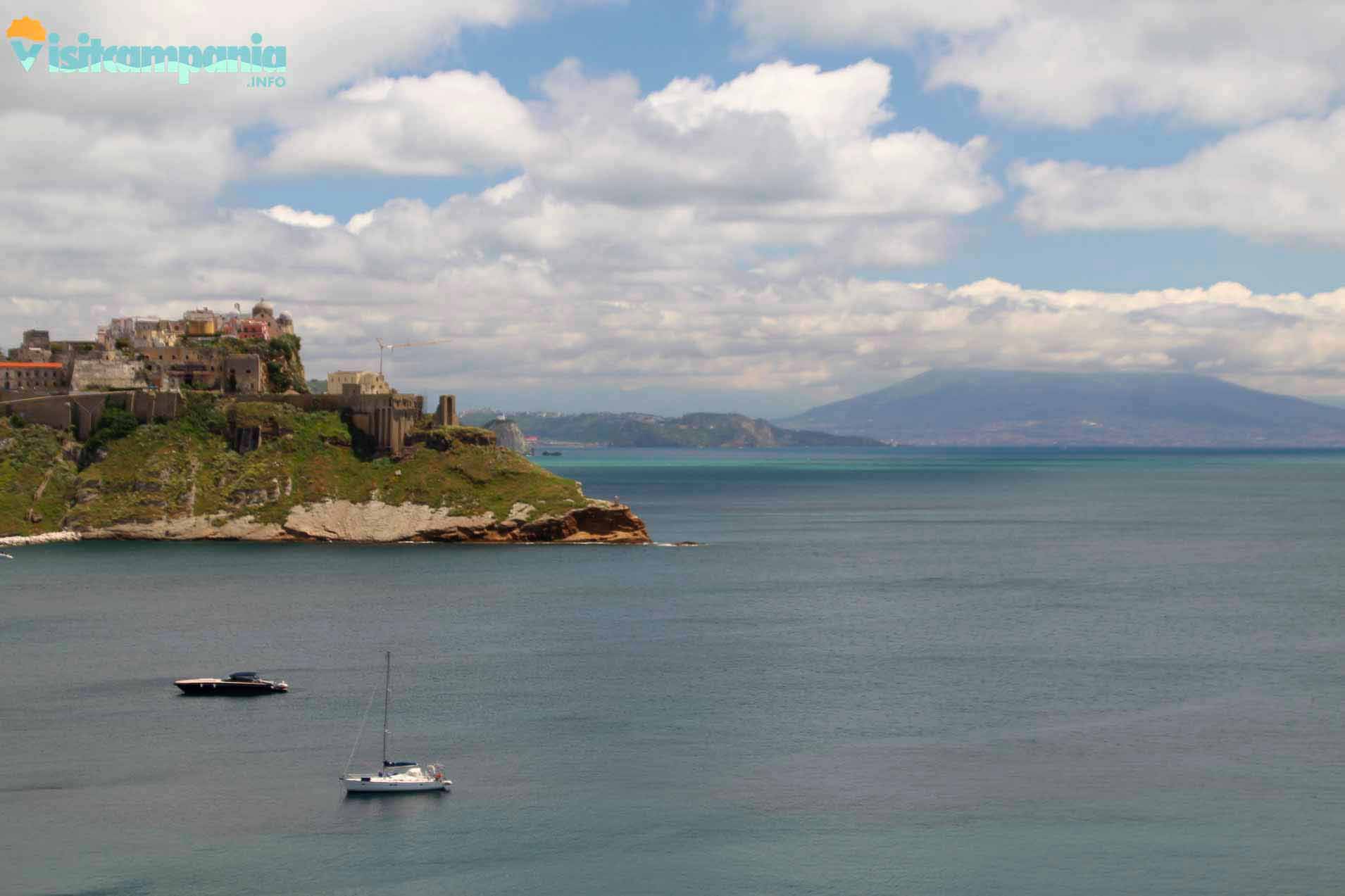
Terra Murata is the oldest and highest village on the island of Procida . Situated on a natural promontory overlooking the sea, this place offers a spectacular view of the Gulf of Naples . Once a fortified refuge against pirate raids, it still retains the appearance of a medieval village , with narrow stone alleys, arches, and houses leaning against each other. Among its most representative buildings stands out the Abbey of San Michele Arcangelo , built in the 11th century and later expanded. Inside there are precious works of art, a historic library and the remains of underground catacombs.
The D’Avalos Castle
Built in 1563 by order of Cardinal Innico d’Avalos, the D’Avalos Castle dominates Procida from the top of the Terra Murata hill . Originally a noble residence, it was transformed into a Bourbon prison and remained active until the second half of the twentieth century. Today, although it is undergoing restoration, it can be visited with guided tours that lead through cells, courtyards and corridors that tell centuries of history. The austere atmosphere of the castle and its panoramic position make it one of the most fascinating places on the island.
La Corricella: the fishing village

The Marina di Corricella is the most iconic face of Procida . This small port is famous for its colorful houses , built one above the other in a kaleidoscope of pastel colors. A tradition has it that this chromatic variety helped fishermen recognize their home from afar. Once inhabited exclusively by fishermen, today it preserves its authentic charm intact , among nets spread out in the sun, anchored boats and premises overlooking the sea.
Marina Grande (Sent’cò): the gateway to the island of Procida

Marina Grande is the main landing point for those arriving in Procida . Lively and animated, it hosts restaurants, bars, shops and the town hall. From here, the roads branch off to other corners of the island. The area is characterized by historic buildings, including the church of Santa Maria della Pietà , and a privileged view of the comings and goings of ferries and hydrofoils.
Chiaiolella and the bridge towards Vivara
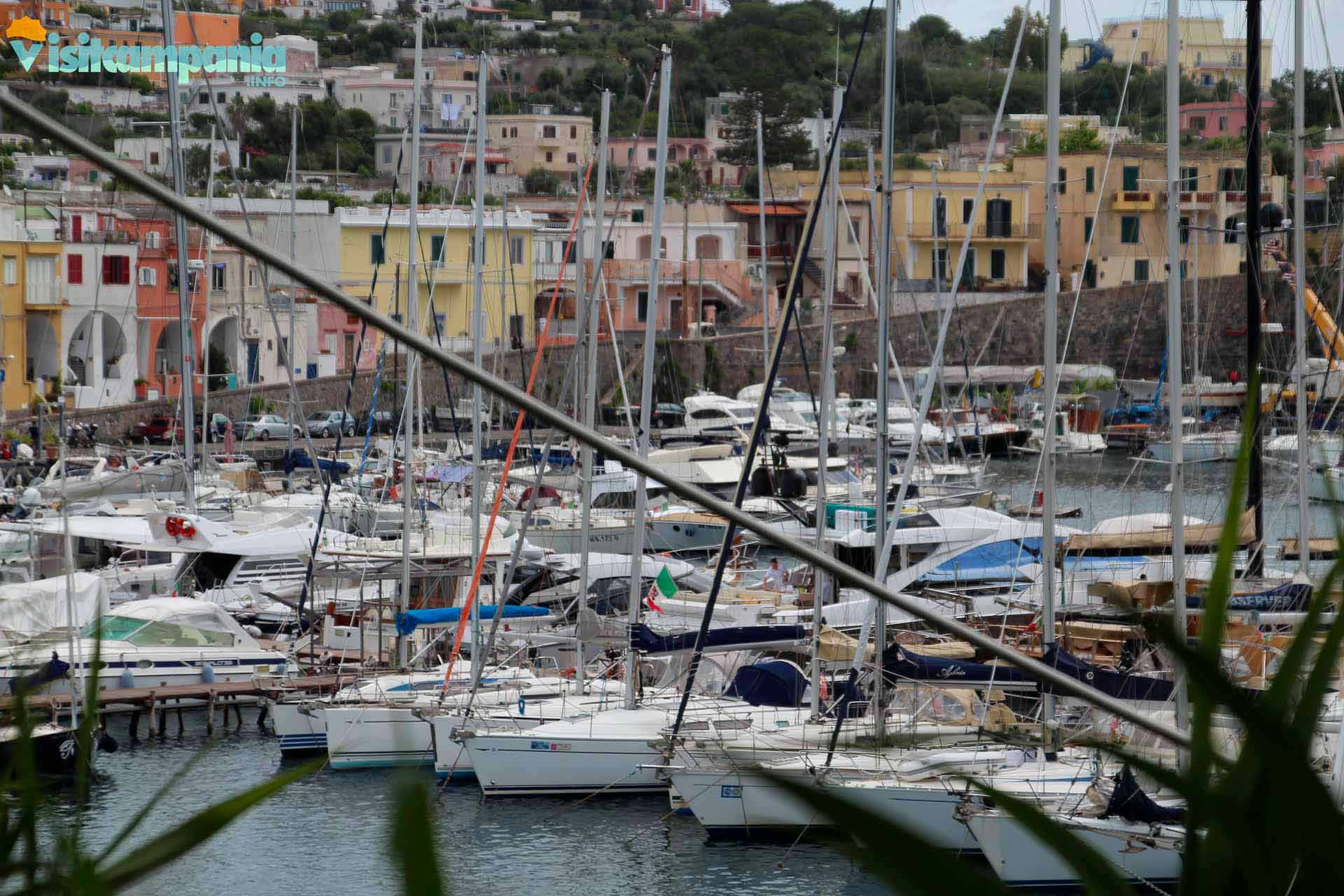
Chiaiolella is the quietest and sunniest area of Procida . Its tourist port is surrounded by sandy beaches, restaurants and bars on the sea. From here starts the pedestrian bridge that connects the island to Vivara , a natural reserve of extraordinary beauty. Ideal for walks and romantic sunsets , Chiaiolella is also an excellent starting point for exploring the south-western coast.
Vivara: a corner of uncontaminated nature

Vivara is a small island connected to Procida by a pedestrian bridge . Although it is privately owned, it represents an important example of protection of Mediterranean flora and fauna. Since 2002 it has been declared a State Nature Reserve and is home to a very rich Mediterranean biodiversity . It can only be explored with guided tours , in compliance with the protected ecosystem. In addition to the lush nature, Vivara is also an important archaeological site : here the remains of a Mycenaean settlement dating back to the 15th century BC have been found.
Historic farmhouses and popular architecture
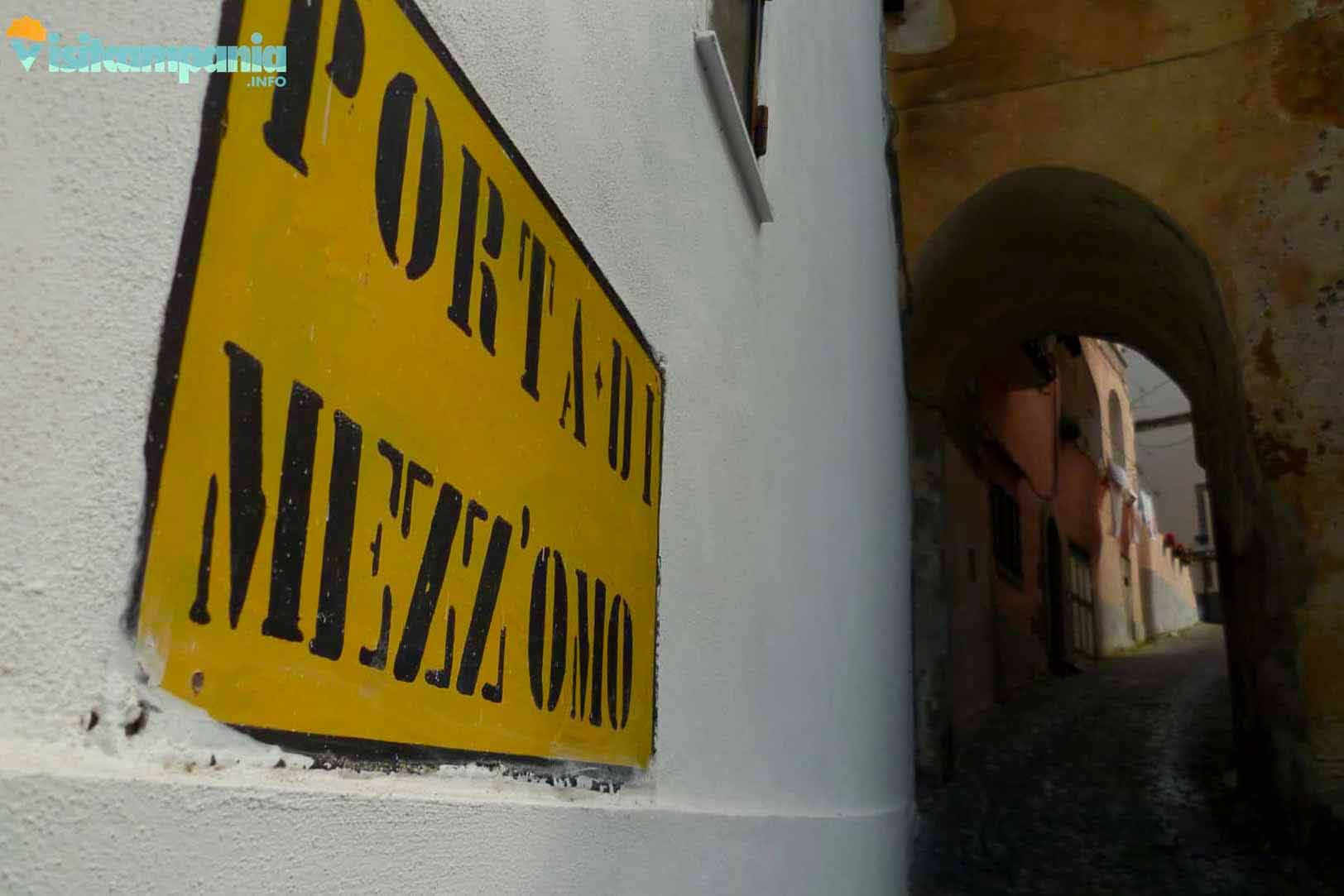
Among the hidden jewels of Procida are the casali, small fortified residential nuclei of seventeenth-century origin , such as the suggestive Casale Vascello in Torre Murata. Here you can admire the local popular architecture, with the characteristic spiral staircases, arches and vèfi (covered terraces). The houses are painted in ever-changing pastel colors, creating a lively chromatic harmony that reflects the maritime identity of the island.
Watchtowers: Sentinels of the Past
Scattered along the coastal perimeter of the island are the ancient watchtowers, built between the 16th and 17th centuries to defend the island from Barbary raids . These structures, now partly incorporated into modern homes, represent a fascinating historical testimony and often offer extraordinary panoramic points over the sea .
The beaches: little corners of paradise

Procida is an island that conquers with its slow rhythms, its colorful houses and, above all, with its beaches: intimate, different from each other, but all bathed by a transparent sea that caresses the soul. Here is a journey through its most fascinating bays, with useful information on services and atmospheres, to help you choose the perfect beach for your relaxing day .
Chiaia Beach: Corricella’s Balcony on the Sea
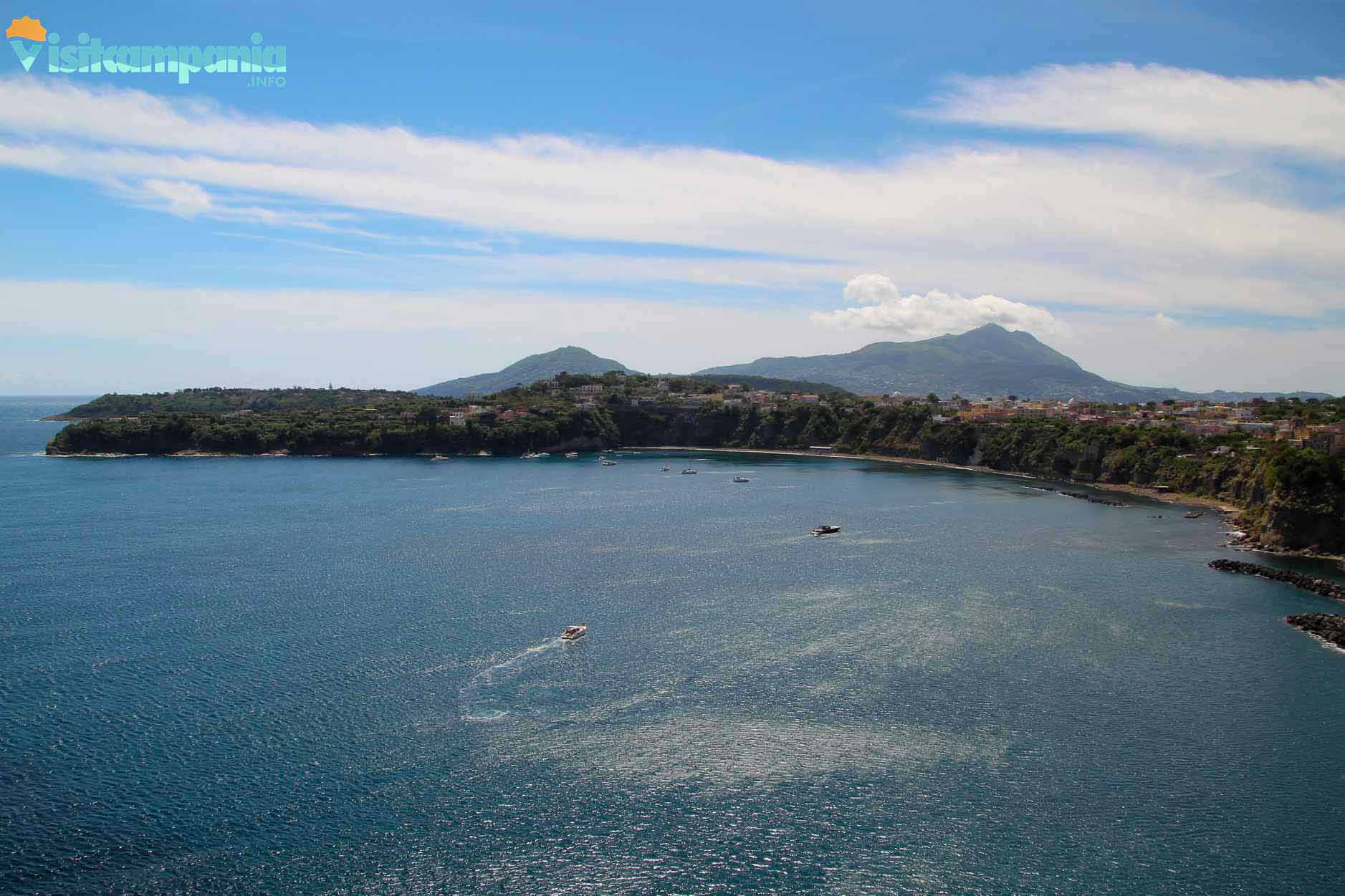
To reach it, you have to climb a long staircase : 182 steps that seem like a lot, but become little when, once you reach the bottom, you find yourself in front of an incomparable natural spectacle . The Chiaia beach is a stretch of dark sand set between tuff walls and lapped by calm waters, also ideal for children . In front, the colorful village of Marina Corricella is reflected in the sea, creating a postcard-like scene. Ideal for those seeking peace, beauty and a dive into the true essence of Procida .
Available services:
• Some beaches equipped with sunbeds and umbrellas
• Bars and small restaurants nearby
• Large free area
Recommended for those seeking tranquility, scenic beauty and a dive into the most authentic Procida.
Pozzo Vecchio Beach: the heart set
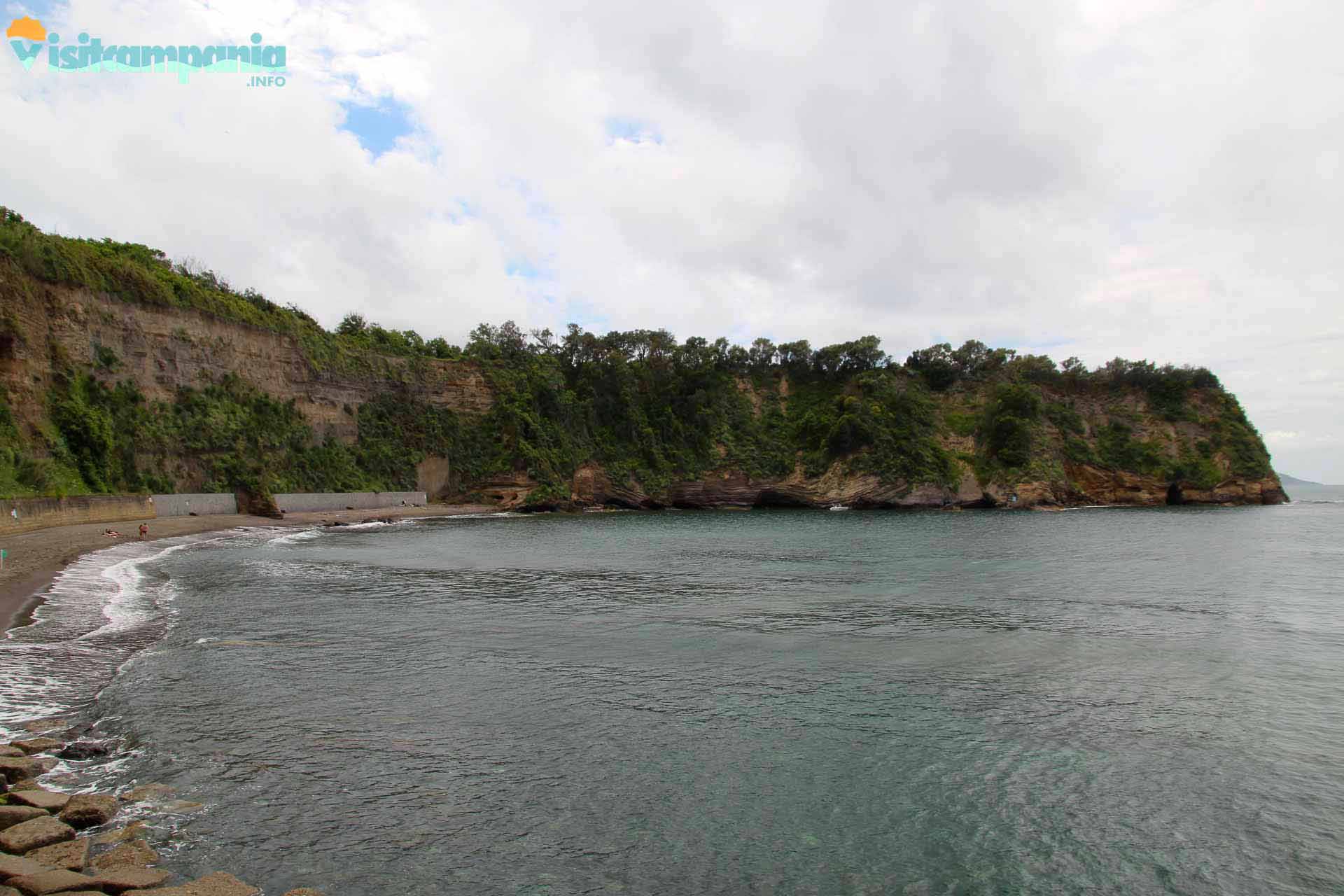
Also known as “ Postman’s Beach ,” Pozzo Vecchio was the backdrop to one of the most famous scenes in the film starring Massimo Troisi. But even without a camera, this secluded cove has everything it takes to leave its mark: clear waters, dark volcanic sand, and high cliffs that protect it from the winds, creating a cozy, almost magical atmosphere. It’s the perfect place for those who love quiet, evocative places and want to lie down in the sun in peace, lulled only by the sound of the waves .
Available services:
• A small beach with bar service
• Fairly large free area
• Access via steep path (not suitable for everyone)
Perfect for romantics and cinephiles, but also for those who simply want to get away from the crowds.
Spiaggia della Lingua: a convenient dip just a stone’s throw from the port
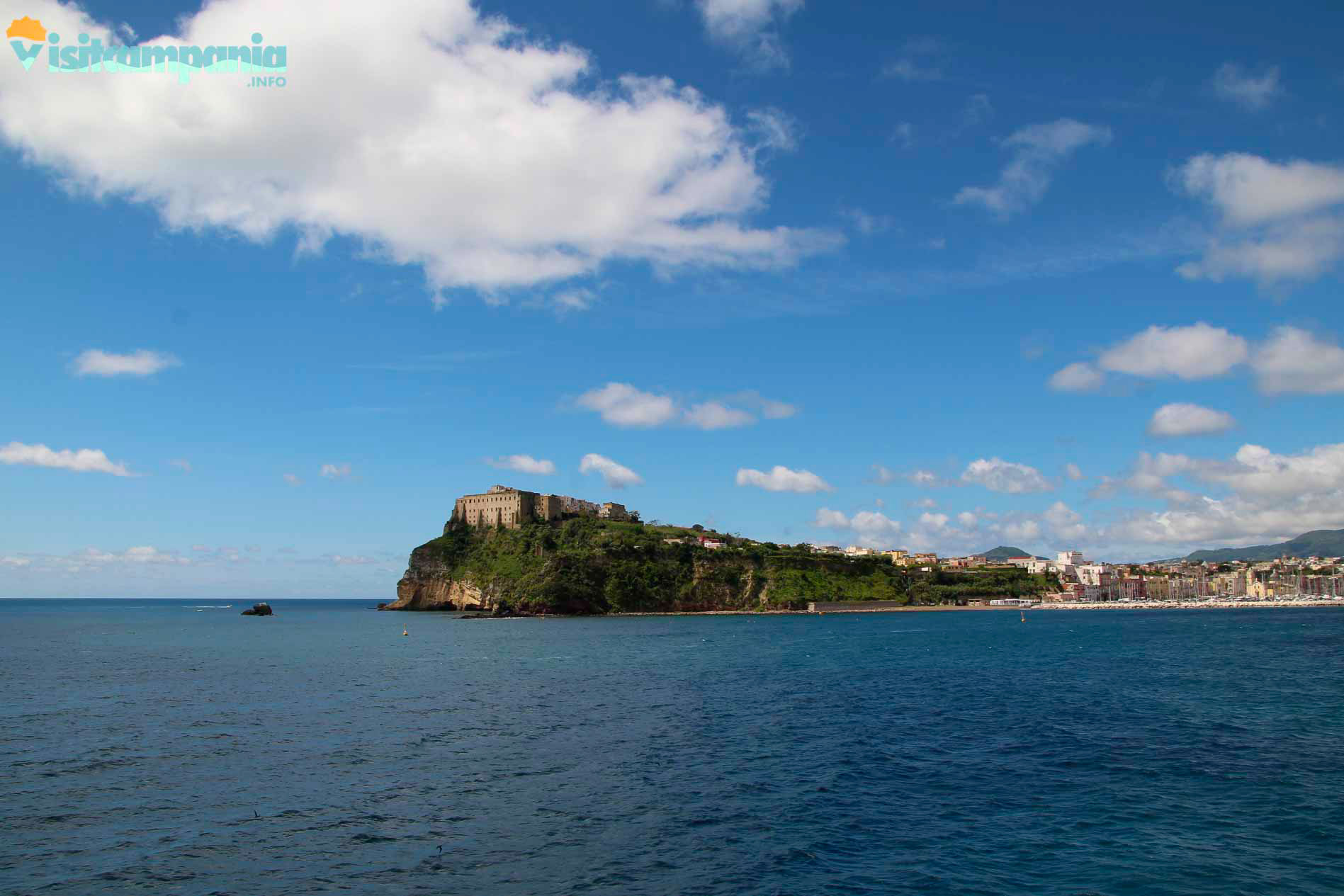
A few minutes walk from the ferry landing , Lingua beach is perfect for those arriving on the island who want to immediately dive into the water without moving too far. Small but well-equipped , with restaurants and bars nearby, it is ideal for those seeking comfort and convenience without sacrificing beauty. The water here is crystal clear like in the rest of the island, and the proximity to the port also makes it perfect for a last swim before leaving.
Available services:
• Beach resorts
• Restaurants and bars with sea view
• Rental of sunbeds and umbrellas
Ideal for those who travel without a car or have little time available, without giving up the beauty of the sea.
Ciraccio Beach: Nature and Space at Will
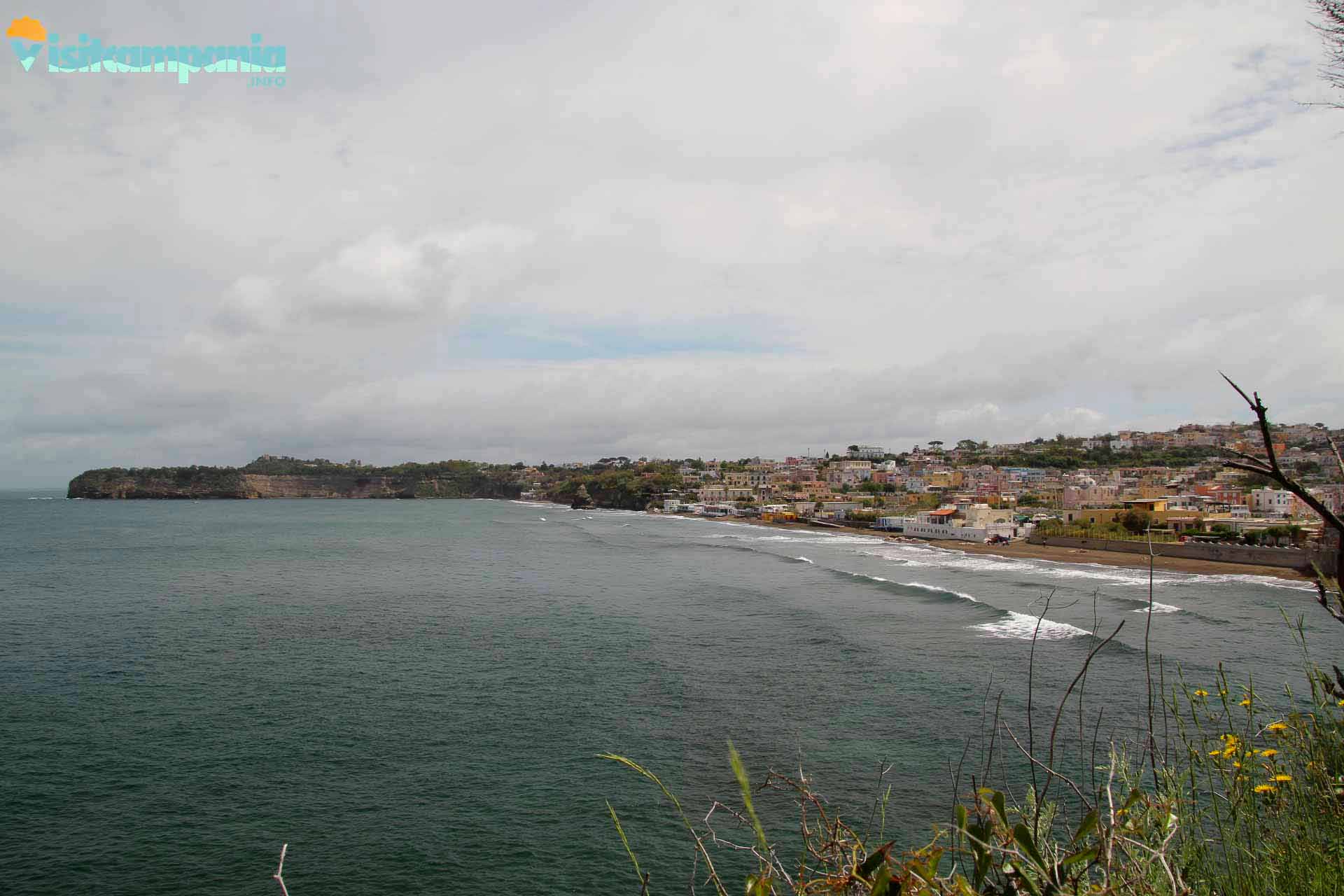
Separated from Chiaiolella by two suggestive stacks , Ciraccio is one of the longest beaches in Procida , with dark sand and a wide and clear sea. The beach is surrounded by wild nature, which contributes to a relaxed and free atmosphere.
Available services:
• Various beach resorts
• Bars and kiosks for refreshments
• Large open areas perfect for laying out your towel
Recommended for those looking for space, sun and the possibility of choosing between comfort and freedom.
Chiaiolella Beach: The Queen of Sunset

Chiaiolella is perhaps the liveliest beach on the island : long, sunny until late and close to the marina of the same name. It is the perfect place for those who want to combine seaside relaxation with a walk along the seafront or an aperitif with a view.
Available services:
• Numerous equipped beaches
• Wide choice of restaurants, bars and ice cream parlors
• Possibility to rent pedal boats, canoes and SUPs
• Excellent accessibility
Perfect for families, groups of friends and those who love a day at the beach with all the comforts and a finale in front of the sun setting over the sea.
Holy Week Processions: Faith and Tradition in Procida
Among the most heartfelt events on the island , Holy Week represents a moment of intense spirituality and collective involvement , attracting visitors from all over the world every year. The processions of Good Thursday and Good Friday are the culminating moments of this rich religious tradition .
Holy Thursday opens with the evocative Procession of the Hooded Apostles , organized by the Archconfraternity of the Whites, founded in 1581 by Cardinal Innico d’Avalos of Aragon. After the liturgy of the washing of the feet, twelve brothers, dressed as apostles with crowns of thorns and crosses on their shoulders, silently parade through the streets of the island, followed by masters of ceremonies and other brothers.
Good Friday is the culmination of the week, with the Procession of the Mysteries , allegorical floats of religious inspiration, curated by the Confraternity of the Turchini founded by the Jesuits in 1629. The procession includes both “fixed” Mysteries , kept all year round in the churches of the island, and “variable” Mysteries , made by artisans and local associations, carried on the shoulders of young brothers. Closing the procession is the majestic statue of the Dead Christ wrapped in an atmosphere of deep devotion that makes the event an unforgettable experience for anyone who attends .
The Procida cuisine
Procida’s cuisine is a perfect balance between land and sea, made of simple and genuine ingredients that tell the story of the island . Local products are the absolute protagonists, starting from artichokes , fresh fish and above all the famous lemons of Procida , large and fragrant. It is no coincidence that one of the most typical dishes is a fresh lemon salad , enriched with onion, oil, chilli pepper, salt and mint. From the same fruit also comes an intense limoncello , perfect to enjoy at the end of a meal.
From the sea comes the pescatora povera , a simple and tasty pasta with anchovies and fried green peppers , which contains all the wisdom of the island’s seafaring tradition. A cuisine that does not need complications to surprise.
And even the desserts speak the language of tradition, from the sweet casatiello , a soft and fragrant donut leavened with mother yeast, to the more recent but now much-loved lingua , a puff pastry shell filled with custard and covered in sugar, which conquers you at the first bite.
Procida in cinema and literature
Procida, which was already the backdrop to the sixth tale of the fifth day of Giovanni Boccaccio ‘s Decameron in the fourteenth century, inspired, among others, the novel “L’isola di Arturo” by Elsa Morante , winner of the Strega Prize in 1957. A literary prize which has been awarded on the island for several years is dedicated to the writer.
The island has been the set of various films , including the famous Il Postino (1994) with Massimo Troisi , The Talented Mr. Ripley with Matt Damon, Francesca and Nunziata with Sophia Loren and Giancarlo Giannini, and Purple Noon with Alain Delon.
The island also hosts the Procida Film Festival , a competition dedicated to cinema divided into five sections.
To learn more
- Food Tour in PROCIDA, ITALY! This SMALL ISLAND is a gem (Video in English);
- Procida – Italiens unentdeckte Insel zwischen Neapel und Ischia (Video in German);
- PROCIDA ITALY, visit NÁPOLES in 1 day to the best island (Video in Spanish);
- Procida, Italy Walking Tour 4K60fps with Captions – Prowalk Tours (Video);


